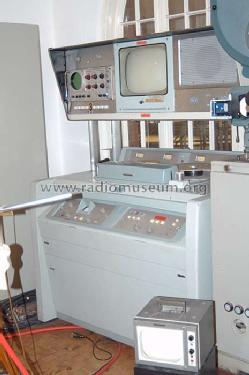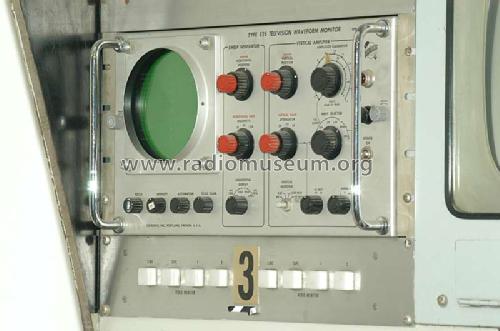VR 1000
Ampex; San Carlos, CA
- Pays
- Etats-Unis
- Fabricant / Marque
- Ampex; San Carlos, CA
- Année
- 1956
- Catégorie
- Enrégistreur et/ou reproducteur son/video
- Radiomuseum.org ID
- 90068
- Particularités
- Magnétoscope
- Matière
- Boitier métallique
- De Radiomuseum.org
- Modèle: VR 1000 - Ampex; San Carlos, CA
- Forme
- Console avec des boutons-poussoirs
- Remarques
-
Schwarz/weiß Bildaufzeichnungsanlage MAZ aus einem Fernsehstudio.
| Ampex 1000 was a revolutionary video recorder, that since 1957 changed the way to do television. This is the article from Electronics, August 1957, describing its operation. | 1448 KB |
- Documents sur ce modèle
- Auteur
- Modèle crée par Mario Spitzer. Voir les propositions de modification pour les contributeurs supplémentaires.
- D'autres Modèles
-
Vous pourrez trouver sous ce lien 87 modèles d'appareils, 84 avec des images et 22 avec des schémas.
Tous les appareils de Ampex; San Carlos, CA
Musées
Le modèle VR 1000 peut être vu dans les musées suivants.
Contributions du forum pour ce modèle: Ampex; San Carlos,: VR 1000
Discussions: 2 | Publications: 2
Fellow radiophiles:
On April 14 1956, Ampex unveilled the world's first commercial video tape recorder. This was 60 years ago, as of 2016.
James O'Neal, technology editor for TV Technology magazine, marked the occasion 10 years ago with an comprehensive article on the debut of video tape recording and just gave an excellent talk that expanded his article at this year's Early Television convention in Hilliard, Ohio on April 30th 2016.
The article follows the historical thread and explains the technical constraints very clearly.
Regards,
-Joe
Joe Sousa, 04.May.16
In 1957 Ampex introduced its VR 1000 video recording system that soon appeared to be the real breakthrough in the television recording. Until that date all the video materials had to be picture recorded on film, since no magnetic tape recorder offered the required bandwidth.
Film recorders were very complex equipment in order to pull-down the film to the next frame during the field-blanking period. A storage CRT was required to recover the lines lost during the film advance. A major drawback of film recording techniques was the need for a further development process. Some experimental works were in progress on magnetic tape recorders to separate the video signal in two or more frequency bands, recording each band in a track of a tape running at very high speed. The most relevant result of this recording technique was the Vision Electronic Recording Apparatus (VERA) developed at BBC in the same years. Here the video signal was split in two sub-bands and recorded on a ½ -inch tape running at 200 inches per second. A third track was used for the audio channel.
The winning idea was to move at high speed a set of four rotating heads against a magnetic tape advancing at relatively low speed. Due to the relative motions, a series of transverse segments of track were written on the tape. Sound and sync tracks were then added along the top and the bottom of the 2-inch wide tape, where the video signals of successive tracks were overlapped. The resulting relative writing speed was as high as 1500 ips, even at tape advancing speed of only 15 ips.
This video recorder was the forerunner of the many home video recorders appeared on the market and using helical scan, as the VHS sets, so popular until few years ago.
Although prototypes were running since 1956, the production just started in 1957. I loaded the full article dedicated to this innovative recorder by Electronics in April 1957.
Emilio Ciardiello, 25.Nov.11




